EXPLORING COPYRIGHTS AND WRONGS TRANSCRIPT
TCH & Common Sense Media - Copyright - Nichole Niebur
Nichole Niebur:
We're going to talk about copyright. So getting us thinking Bell Work. What do you think it means when we talk about someone's creative work?
Niebur (Interview):
I'm Nichole Niebur. I teach FACTS which is a Freshman Study Skills Welcome to High School Preparing for Life Class. I teach at Burke High School in Omaha, Nebraska. Today's lesson is on copyright. Students will start off, and they will have just a Bell Work question and something to get them started thinking about the day's lesson.
Niebur:
So what are some things that we wrote down?
Student #1:
A fictional story.
Niebur:
A fictional story? Alea?
Alea:
Art.
Niebur:
So these are some of my examples. Writing, and this can be books. It can be poems, magazines.
Niebur (Interview):
Then we're going to go through some vocabulary related to copyright. Make sure that they understand all the terms.
Niebur:
Speaking about copyright specifically, well, we do have a little video clip here for us.
Niebur (Interview):
These students as freshmen in high school, they've had to do some sort of a research project where they've used someone else's creative work and they've had to cite their sources. So they've generally heard the term copyright and have a vague understanding of copyright. But things like the other vocabulary terms fair use, public domain, creative comments, these are terms that they really maybe have never heard of.
Niebur:
We have one, two, three, four, five vocabulary terms. Fair use, commercial purpose, copyright, creative comments and public domain. Underneath the term is the definition.
Niebur (Interview):
The more ways that they can wrap their, you know, brains around a concept, the more they'll understand it.
Niebur:
All you need to do is tell me what fair use means in your own words. Restate that definition.
Niebur (Interview):
The students are using English Language Arts skills because they are using vocabulary and vocabulary term gaining a better understanding of them and how they apply.
Niebur:
Anyone want to share their restatement?
Student #2:
A law protecting creative work.
Niebur:
Okay. A law protecting creative work. Creative comments. How do we restate this one? Alea?
Alea:
Using someone's words but also give them credit for it.
Niebur:
Okay. Creative comments is a type of copyright and it makes it real easy to use it.
Niebur (Interview):
The biggest problem that I see with students, they're really bad about even how they cheat. So I will get research papers that have hyperlinks still in it. Then when you start getting into the finer things of, "Did you cite your pictures?" "Well, no, of course I didn't cite the pictures. But I cited the words that I put in there." And so you know students really need to understand that anything that's not their own creative work that they need to make sure that they're giving credit.
Niebur:
You guys are working for an advertising company. You have to create an ad campaign. This is commercial purpose so there's no fair use. Anything that has a copyright, you need to get permission. Okay, so, it's Big, Little and Small Advertising Agency. And it says, "The vegetable farmers of America have hired us to create print and billboard ads that encourage people to become vegetarians. We've gone through hundreds of images for them and have decided on five." So you've got the five there. Choose a photo that you believe will encourage someone to become a vegetarian. But be sure to also consider how the photo was originally used and how it's copyrighted.
Niebur (Interview):
With the advertising activity, the thing that's good about that is the students get a chance to kind of talk with someone else, maybe brainstorm some.
Niebur:
Talk with each other. Make your decisions, especially that last question of would you use it in the ad campaign?
Student #3:
vegetarian.
Student #4:
.
Niebur (Interview):
The students will be pairing up and they have to create an ad campaign or pick a picture basically to use as an advertising company. So the lesson also meets the English Language Standard of working in a collaborative group activity.
Niebur:
Photo number four looks yummy. It's also from a public album on Flicker. The photo was taken and posted by a local chef, and it's listed for commercial use under creative comments. Who owns the picture once it's copyright status?
Student #5:
Creative comments.
Niebur:
Creative comments. Do we know who created the photo?
Student #5:
A local chef.
Niebur:
Why do you think that a chef might have taken this picture?
Student #5:
To bring them into his restaurant?
Niebur:
Look at this. Doesn't it look yummy and appetizing and this is how you can prepare it?
Niebur (Interview):
It's hard for them sometimes to visualize how you could use something and offend someone with using their creative work. You know, if I'm a cattle farmer, would I want my picture to be used in an advertisement saying, "Don't eat beef."
Niebur:
If I'm the chef and I took this picture of my deliciously created beef with the purpose of trying to get you into my restaurant, am I going to be happy to see it being used in a campaign to not eat beef? Maybe not.
Niebur (Interview):
The point of the lesson is so that students know the legal ramifications. They know what they're allowed to do with copyright law. They maybe start thinking when they are working with someone else's creative use, what can I do? What can I not do? What they can use and how they can use it within school. And then making sure when they're at home just playing around with their computers that they understand that people's creative works that they're using are protected.
Alea:
I didn't know that you could like get in trouble for taking someone's like song. Like if they made it and you didn't like know the person who made it . I didn't know that you can get in trouble for doing that.
Niebur:
So, check who owns it. Ask. "Hey, can I use it?" Give credit for your, whatever you're using. Pay money if need be, and then use it responsibly thinking about what the person would want. Do you think it's important to give credit and get permission when you're using someone else's work? A show of hands.

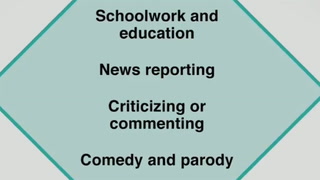

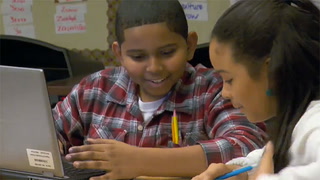

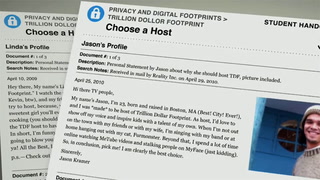

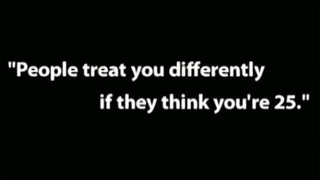
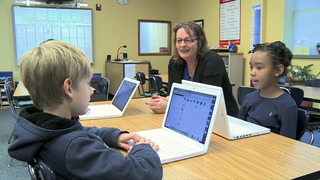

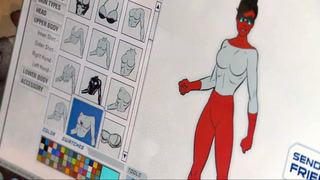



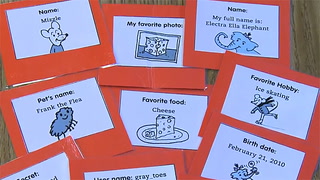








6 Comments
Becky Frangella Feb 2, 2017 7:10pm
Erika DuBois Jan 23, 2014 11:08pm
Erika DuBois Jan 23, 2014 11:05pm
Janis Crosby Sep 2, 2013 1:10pm
Julia Chope Jun 17, 2013 12:58pm